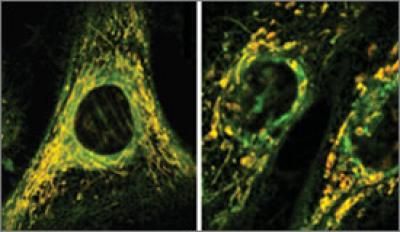New lung 'organoids' in a dish mimic features of full-size lung
New lung "organoids"--tiny 3-D structures that mimic features of a full-sized lung--have been created from human pluripotent stem cells by researchers at Columbia University Medical Center (CUMC). The team used the organoids to generate models of human lung diseases in a lab dish, which could be used to advance our understanding of a variety of respiratory diseases.

Bright-field images of day 50 LBO-derived Matrigel colonies from RUES2 cells. Representative of six independent experiments. Scale bars, 500μm.
Snoeck lab/Columbia University Medical Center
Organoids are 3-D structures containing multiple cell types that look and function like a full-sized organ. By reproducing an organ in a dish, researchers hope to develop better models of human diseases, and find new ways of testing drugs and regenerating damaged tissue.
"Researchers have taken up the challenge of creating organoids to help us understand and treat a variety of diseases," said Hans-Willem Snoeck, PhD, professor of medicine (in Microbiology & Immunology) at CUMC and lead investigator of the study. "But we have been tested by our limited ability to create organoids that can replicate key features of human disease."
The lung organoids created in Dr. Snoeck's lab are the first to include branching airway and alveolar structures, similar to human lungs.
To demonstrate their functionality, the researchers showed that the organoids reacted in much the same way as a real lung does when infected with respiratory syncytial virus (RSV). Additional experiments revealed that the organoids also responded as a human lung would when carrying a gene mutation linked to pulmonary fibrosis.
RSV is a major cause of lower respiratory tract infection in infants and has no vaccine or effective antiviral therapy. Idiopathic pulmonary fibrosis, a condition that causes scarring in the lungs, causes 30,000 to 40,000 deaths in the U.S. each year. A lung transplant is the only cure for this condition.
"Organoids, created with human pluripotent or genome-edited embryonic stem cells, may be the best, and perhaps only, way to gain insight into the pathogenesis of these diseases," Dr. Snoeck says.
Original publication
Ya-Wen Chen, Sarah Xuelian Huang, Ana Luisa Rodrigues Toste de Carvalho, Siu-Hong Ho, Mohammad Naimul Islam, Stefano Volpi, Luigi D. Notarangelo, Michael Ciancanelli, Jean-Laurent Casanova, Jahar Bhattacharya, Alice F. Liang, Laura M. Palermo, Matteo Porotto, Anne Moscona & Hans-Willem Snoeck; "A three-dimensional model of human lung development and disease from pluripotent stem cells"; Nature Cell Biology; 2017
Most read news
Original publication
Ya-Wen Chen, Sarah Xuelian Huang, Ana Luisa Rodrigues Toste de Carvalho, Siu-Hong Ho, Mohammad Naimul Islam, Stefano Volpi, Luigi D. Notarangelo, Michael Ciancanelli, Jean-Laurent Casanova, Jahar Bhattacharya, Alice F. Liang, Laura M. Palermo, Matteo Porotto, Anne Moscona & Hans-Willem Snoeck; "A three-dimensional model of human lung development and disease from pluripotent stem cells"; Nature Cell Biology; 2017
Topics
Organizations
Other news from the department business & finance

Get the life science industry in your inbox
By submitting this form you agree that LUMITOS AG will send you the newsletter(s) selected above by email. Your data will not be passed on to third parties. Your data will be stored and processed in accordance with our data protection regulations. LUMITOS may contact you by email for the purpose of advertising or market and opinion surveys. You can revoke your consent at any time without giving reasons to LUMITOS AG, Ernst-Augustin-Str. 2, 12489 Berlin, Germany or by e-mail at revoke@lumitos.com with effect for the future. In addition, each email contains a link to unsubscribe from the corresponding newsletter.
Most read news
More news from our other portals
Last viewed contents
Naegeli_syndrome

Dodging antibiotic side effects - New insights into how antibiotics damage human cells suggest novel strategies for making long-term antibiotic use safer
Allosteric_regulation
Ballard_Maturational_Assessment





















































